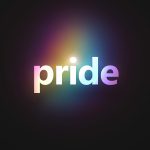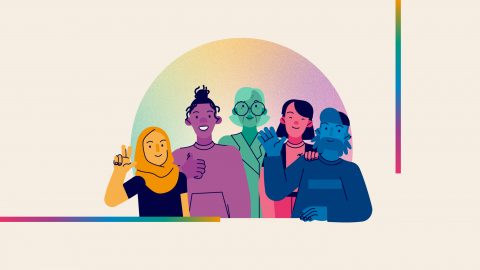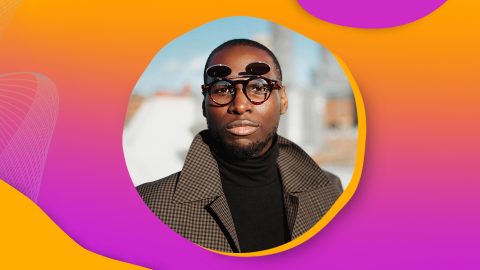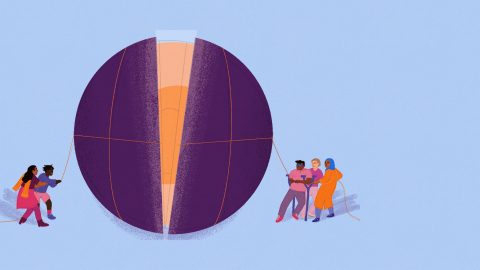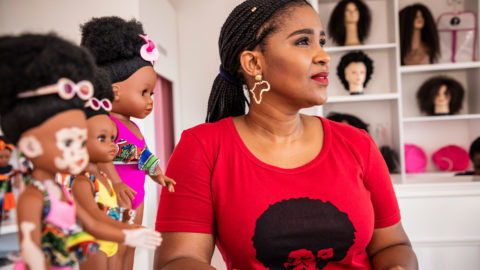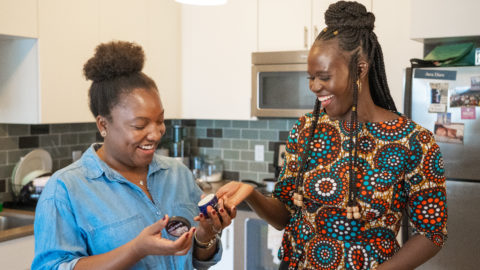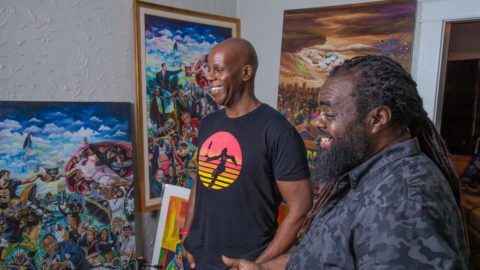The rainbow ripple effect: how Microsoft and its LGBTQ+ employees push for change across borders
Buoyed in part by their company's commitment to LGBTQ+ people, Microsoft employees are fighting harder than ever for human rights in the workplace and around the globe.
From the time software engineer Michelle Chen was little, she loved wearing “boy’s” clothes and keeping her hair buzzed. This wasn’t a problem until one day in third grade, while she was leaving the girls’ restroom at her elementary school in Ohio. Several teachers stood outside the door, responding to someone’s complaint that there was a boy in the girls’ restroom.
“I had to laugh it off at the time,” Chen said. “But it absolutely crushed me inside.”
After that, the young Chen avoided going to the bathroom at school, opting to wait until she could run home after school because her house was the only place she felt truly safe.

Throughout middle and high school, Chen made accommodations to avoid awkward encounters, like the first day of gym in sixth grade when she begged the teacher to go into the locker room before her and tell everyone else that it was okay, she was a girl, she was in the right place.
“I felt so ashamed that someone else had to validate my gender,” said Chen, who also felt pressured to grow out her hair and dress more traditionally feminine, just to feel more inconspicuous using the restroom.
But it wasn’t until Chen came to work at Microsoft that she began to realize the full impact this experience of trying to hide in plain sight had on her life. For the first time, being lesbian wasn’t a liability or a worry; Chen was able to embrace it as an integral part of her identity.
“I truly believe that coming to Microsoft changed my life,” said Chen, who quickly encountered many other LGBTQ+ employees and allies at the company. “I had never met so many people that truly wanted to learn more about me and accepted me for who I was.”
Microsoft has a history of supporting and advocating for LGBTQ+ rights: In 1993, it became the first Fortune 500 company to provide same-sex domestic partnership benefits, and it was also one of the first companies to include sexual orientation in its corporate non-discrimination policy.
Since then, spurred in part by the voices and experiences of employees such as Chen, Microsoft has pushed for equality and inclusion in the workplace. As the culture continues to shift in the United States and around the globe, the company advocates for the rights of LGBTQ+ people internally and externally through progressive policies, legal actions, and partnerships with human rights groups; pushes to make gaming welcoming for all; and works to reshape the global marketplace by developing, with the United Nations, global standards to eliminate LGBTQ+ discrimination in business.
I had never met so many people that truly wanted to learn more about me and accepted me for who I was.
For many employees and LGBTQ+ people all over the world, the stakes are high. Being gay is considered a criminal offence in 72 countries. For LGBTQ+ people aged 10–24, suicide is one of the leading causes of death. Aside from their physical safety and mental health, discrimination impacts LGBTQ+ people’s economic stability and career paths: the unemployment rate among transgender workers, for example, is two to three times higher than the overall US workforce.
In the face of these issues, Microsoft employees, empowered by a workplace culture where they are treated equally and welcomed to be their authentic selves, have built a strong support and advocacy network to push for change wherever it’s needed.
Inside Microsoft’s walls
When Chadd Knowlton first realized that his child, who was designated male at birth, started identifying as a girl at the age of 3, he was supportive but also scared for what that might mean for her safety and sense of belonging. Though the journey (which his wife and former Microsoft employee, Vlada Knowlton, explored in a documentary) was heart wrenching, Knowlton—a corporate vice president who has worked at Microsoft for more than 20 years—held on to a comforting thought.
“She might not be accepted everywhere in the world,” Knowlton said. “But I knew if she got a job at Microsoft one day, she would always be accepted here.”
The Human Rights Campaign’s (HRC) Corporate Equality Index corroborates this. For over a decade, Microsoft has earned a ranking of 100 on the national benchmarking tool that rates corporate policies and practices pertinent to lesbian, gay, bisexual, transgender, and queer employees. Not only was Microsoft an early leader in including sexual orientation in its corporate non-discrimination policy, but it continues to evolve to support employees—for instance, by broadening its health benefits to encompass medical needs for US-based transgender employees and their transgender dependents.
“Chad Griffin, president of the HRC, says that life happens in four places,” said Michael Karimian, human rights program manager for Microsoft. “At home, at school, at a place of worship, and at a place of work.”
“Though we can’t influence every aspect of life for our LGBTQ+ employees, we can work to create a workplace that is welcoming, respectful, and inclusive – where they can do their best work. But, there are times when we need to be engaged on issues that are affecting how they feel welcome in their communities outside work,” said Karimian.
“It’s imperative that businesses provide that equality to employees.”
Though we can’t influence every aspect of life for our LGBTQ+ employees, we can work to create a workplace that is welcoming, respectful, and inclusive – where they can do their best work.
Regardless of where Microsoft operates, it seeks to provide a place where employees feel safe and supported so that they can come as they are and focus on their work. In some places and for some employees, this creates a better experience within the four walls of Microsoft than they might experience in their outside lives.
One key conduit for creating a supportive workplace is the internal employee group, Gay and Lesbian Employees at Microsoft or GLEAM (which also includes transgender, queer, and bisexual employees, and their allies). Founded in 1993 with a dozen employees, GLEAM now has more than 2,000 members globally, with 40 chapters in 36 countries.
The experience of being LGBTQ+ varies from country to country and culture to culture. For instance, in parts of Asia such as Singapore and India, being gay is illegal.

Because employees face different challenges and realities depending on where they live, GLEAM works to meet them where they are with what they need.
For example, Mike Emery, who co-founded the Singapore GLEAM chapter when he lived there, said that chapter has more people self-identifying as allies than as LGBTQ+, because many employees aren’t out at work or in their private lives and want to be a part of the events while still protecting their privacy.
“It may be the first time they’ve become involved in their whole life in anything LGBTQ+,” said Emery, who is now located in the UK. He figures a good experience in GLEAM, even as an ally, might be the stepping stone a LGBTQ+ employee needs to gain the confidence to eventually come out at work.
Even in the United States, where the culture in recent years has shifted significantly in areas such as same-sex marriage and military equality, there are opportunities to evolve even more as a company. A group of employees has formed the Gender Expression and Transgender discussion group at Microsoft. Among other initiatives, the group is working with Microsoft facilities managers on various campuses in North America and in the UK to renovate or install all-gender restrooms and have created a map for employees to locate all the single-stall restrooms on the Redmond campus.
“Feeling comfortable in a gendered space like a bathroom is a luxury that many people almost never think of but that many don’t get to enjoy,” said Chen, remembering her days of sprinting home after school to use the restroom.
To spread awareness and build a culture of allyship, GLEAM partners with Microsoft’s executive leadership teams to define and implement corporate diversity initiatives, such as the company’s LGBTQ+ Pride Month celebration and LGBTQ+ specific diversity training. GLEAM also provides consulting for product development groups, and support and mentorship in career and personal growth for LGBTQ+ employees.
Out in the world
Encouraged by what they’ve seen is possible within their own work community, Microsoft employees are increasingly lending their focus, talents, and energy to Microsoft’s already strong legislative and advocacy efforts to drive change externally, outside the company.
In 2016, a new team was established within Microsoft to focus on furthering policy and advocacy of global human rights, including those for LGBTQ+. Microsoft’s LGBTQ+-focused policy efforts have included officially endorsing the Washington state campaign that fought a proposed law aimed at preventing transgender people from using their bathroom of choice; joining with other businesses in signing an amicus brief contending US federal law prohibits employment discrimination based on sexual orientation; and opposing a section of India’s penal code that criminalizes same-sex relationships.
Also, GLEAM is part of a coalition of businesses that support passage of the federal Employment Non-Discrimination Act (ENDA), which would provide basic protections against workplace discrimination on the basis of sexual orientation and gender identity. More recently Microsoft supported marriage equality in the United States and Ireland, and the company has made a public commitment to support marriage equality in every market in which Microsoft operates around the world.
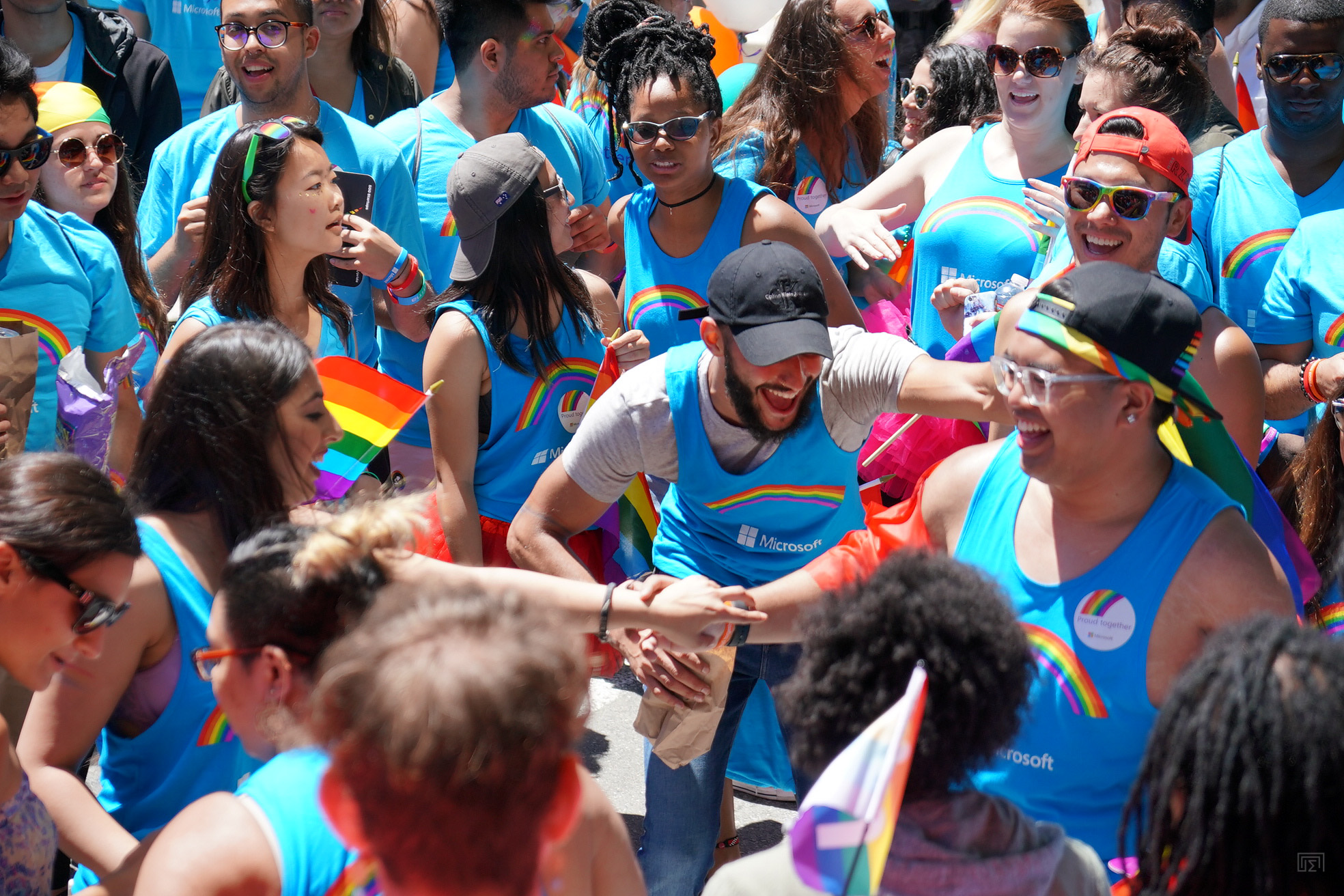
“Microsoft is leveraging the incredible community we have from across the world to advance human rights,” said John Galligan, senior director for global government affairs at Microsoft and GLEAM member. “This is the way the company lives up to its values, because we want everyone to be their authentic self.”
Another milestone came most recently when Microsoft signed on to help develop new standards of conduct released by the United Nations to urge business around the world to tackle discrimination against LGBTQ+ people.
“While important strides have been made to advance LGBTI rights, there are still gaps,” said Brad Smith, president and chief legal officer at Microsoft, at the announcement last fall. “Corporate standards, set by the private sector, can help companies articulate its values and stand up for the rights of LGBTI individuals in the workplace and communities in which they do business.”
But progress can be slow, especially as global culture continually shifts. In many countries, LGBTQ+ rights are advancing, but in others, Emery said they seem to be taking steps backward. In many of those instances, Microsoft’s ability to affect legislation and protections outside the company’s walls is limited.
“We are a multinational operating in a multicultural world, and every country presents opportunities and challenges for us,” said Galligan. “But Microsoft stands at the ready to help and to push for change when we feel it’s in the best interests of our employees and where it’s possible to make a sustained impact.”
Corporate standards, set by the private sector, can help companies articulate its values and stand up for the rights of LGBTI individuals in the workplace and communities in which they do business.
It lends support when possible through empowering employees such as Cathy Balcer, GLEAM chapter lead in Singapore, who joined with other companies to promote “freedom to love” nights all over the city; Andrea Llamas, GLEAM lead in Mexico, who helped Microsoft officially join a local network of companies that are LGBTQ+ friendly; and Nidhi Singh, Roland White, Bibaswan Dash, and Mike Emery, who helped launched the first GLEAM chapter in India, which garnered 100 employee members in its first week.
An industry that looks like you
Aside from pushing for social change and increased protections, around the globe, Microsoft is also working to drive inclusion in the technology industry for all, including people who are LGBTQ+.
Women account for 24 percent of science, technology, engineering, and mathematics (STEM) jobs, according to the Economics and Statistics Administration’s 2017 numbers.

“If you’re LGBT and minority, you’re in a double bind. If you’re in a minority and LGBT and a woman, you’re in a triple bind,” said Rochelle Diamond, chair of the board of directors of the National Organization of Gay and Lesbian Scientists and Technical Professionals.
That’s why Microsoft supports organizations like Out Leadership, which works to fill more C-suite level jobs with LGBTQ+ talent. Microsoft employees attend events like the Lesbians Who Tech summit, which connects lesbians and helps them build a network of colleagues, associates, and friends in the industry in addition to championing the representation of out lesbian women in the field.
It was that very summit helped spark Chen’s own personal awakening.
“Shortly after I started, I was out to my immediate team and manager, but I was living as a software engineer who also happened to be gay,” said Chen. “It wasn’t a part of who I was at work, just kind of like a fun fact about me.”
Chen had heard about the Lesbians Who Tech summit and wanted to check it out. She was trepidatious when she asked her manager, unsure how taking time off work solely to understand how what it means to be gay in the workplace might be perceived. To her delight, her manager was all in.
“My being queer was seen by management as important and worth the funding to explore what that meant for me,” she said.
When Chen started at Microsoft as an intern, she initially worried that she would have be closeted to survive a corporate work environment. But when her teammates showed genuine interest in her life and weren’t at all bothered by her sexuality, Chen decided she was never going to hide her real self for a job again.
“Now, I try to include this perspective in every discussion I have. I want to be the representation that I was so sorely missing growing up.”


